In this article, we will learn about what is Python Programming i.e. an introduction to Python, brief history of Python language, how programming in Python works, where all Python can be used as a programming language & also we will look into the benefits of using Python language.
This is the first article in the Series: Python Tutorial – Learn Python Programming for Beginners
Python is one more general-purpose programming language in the computer world but definitely with its own features, syntax, uniqueness & usage scenarios. Python language has been around for many years and is very popular due to its simplicity and flexibility.
For any developer who has previous knowledge of any other programming language will not be difficult to learn Python. Python is simple for even first-time programmers who are trying to learn programming and selected Python as their first language in the journey of programming.
Introduction to Python
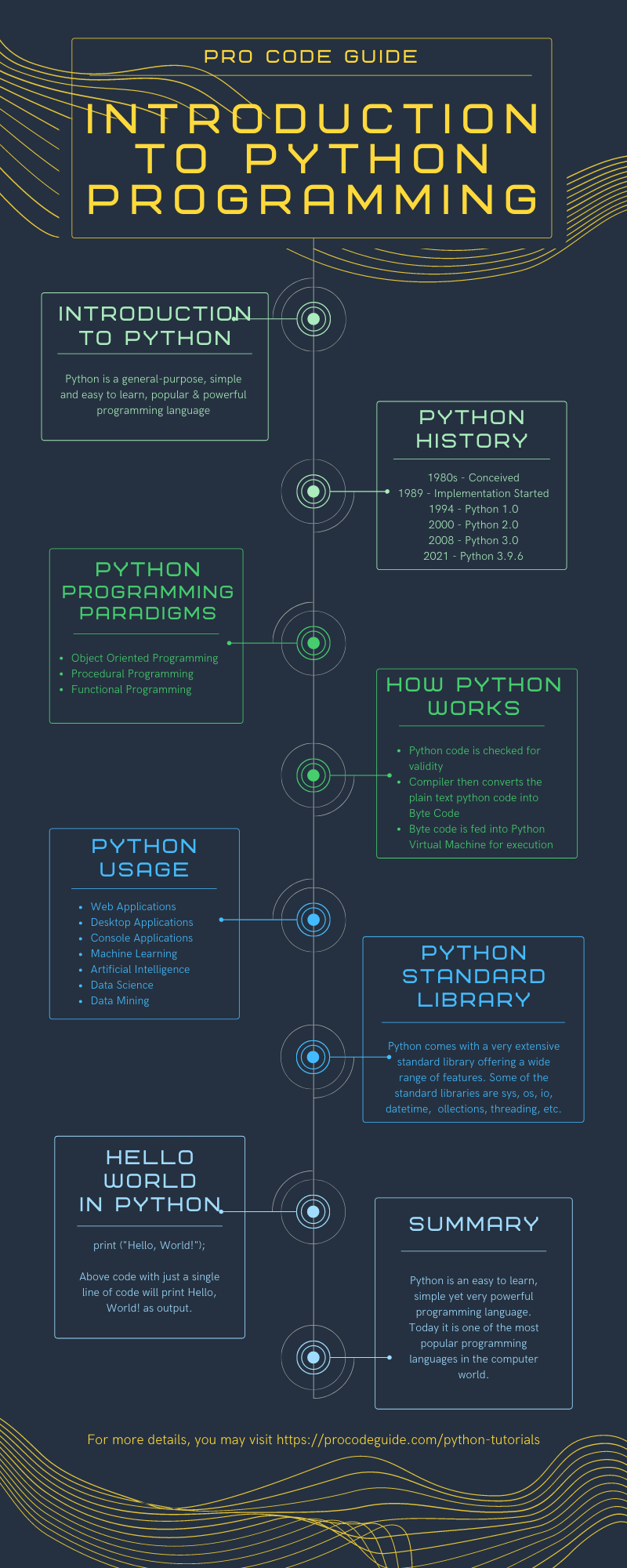
Python is a general-purpose, simple and easy to learn programming language which is
- Free & open-source – can be freely used and distributed.
- Portable – supports wide variety of platforms like Windows, Linux, macOS, etc.
- Simple on syntax – easy to read and understand as it is similar to plain english text.
- Popular – finds applicability in lots of applications like web application, scripting, data science, rapid application development, etc.
- Powerful – often described as batteries included due to its comprehensive standard libarary
- Extendable – Python programs can be made more efficient by adding low level modules.
- Interpreted – no need to compile before execution as it is processed at runtime by interpretor
- Interactive – supports interactive mode which finds applicability in interactive testing
Python History
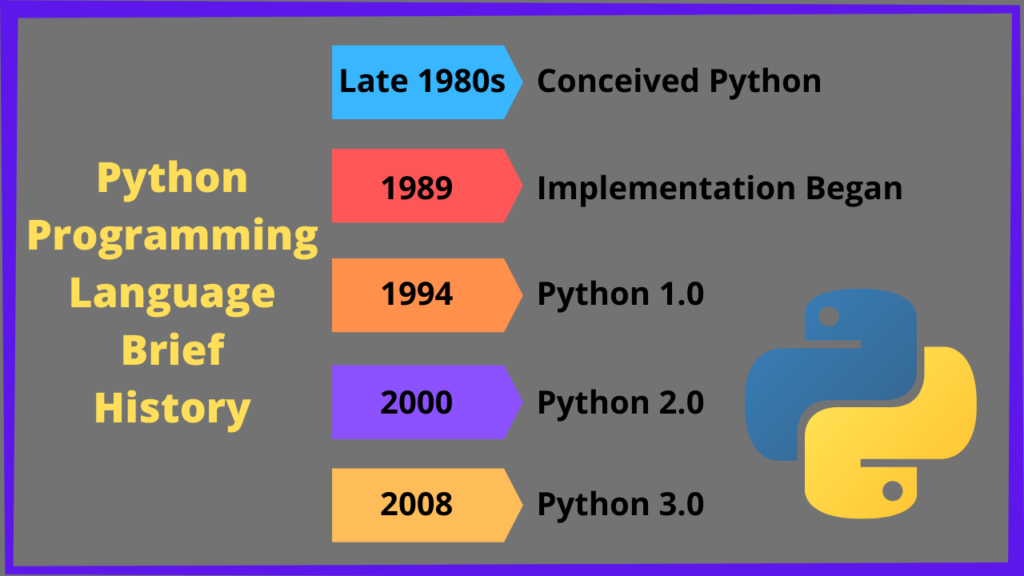
Python was conceived in the late 1980s by Guido van Rossum. Python Programming Language was developed as a successor to ABC programming language. The language is named after one of Van Rossum’s favourite programs on BBC “Monty Pythons Flying Circus”.
Van Rossum started the implementation of Python in December 1989.
Python 1.0, 2.0 & 3.0 was released in year 1994, 2000 & 2008 respectively.
The latest version of Python 3.9.6 was released in June 2021
Programming Paradigms Supported in Python
Python as a programming language allows developers to code in different programming paradigms as discussed below
- Object Oriented – Supports object oriented style of programming which invloves objects that are instance of a class and forms that system. This styles supports encapsulation with the help of the concept of inheritance which allows developers to implement loosely coupled code which is good for maintenance and testability.
- Procedural – Supports procedures, functions, control structures, loops, etc that can be used to form a sequence of statements that are serially executed step by step to tell the interpreter what should be done. This allow developers to modularize the code.
- Functional – Supports program as a set of functions that operates on the input to generate the output. Functional approach is mainly about what to solve rather than how to solve.
How Python works
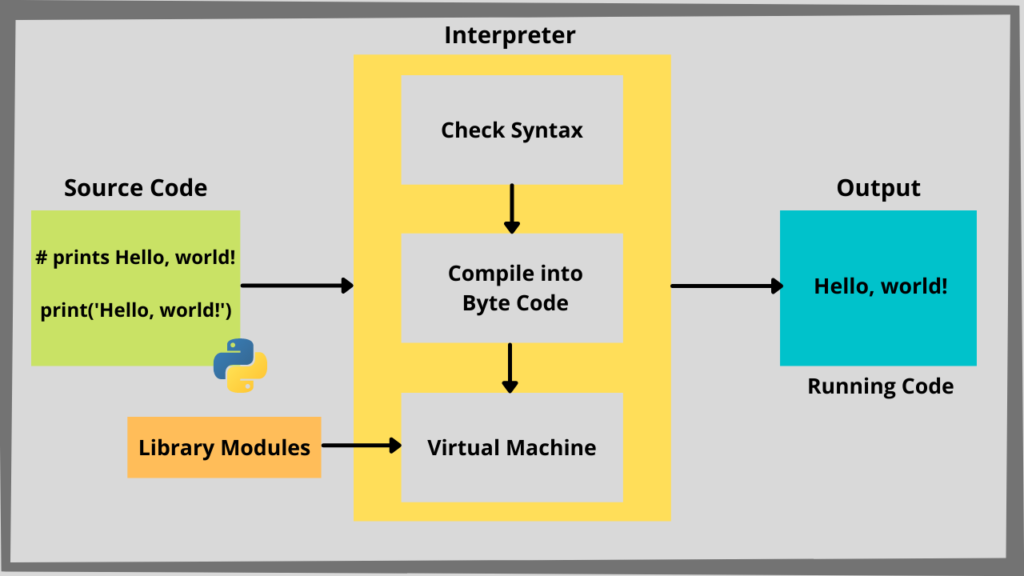
Like many other languages, Python doesn’t need to be precompiled for execution. In fact, Python is an interpreted language in which code is fed into another program called an interpreter and this interpreter is responsible for the execution of the python program. Python interpreter read the plain English Python code and converts it into intermediate code which gets executed.
- Python code is checked for validity i.e. syntax checks are done so that it can be understood by Python compiler for conversion.
- Compiler then converts the plain text python code into Byte Code which is low level & platform independent intermediate code. This byte code gets stored in the file with name same as original source code file with extension as .pyc (c indicates compiled code)
- Byte code is fed into Python Virtual Machine for execution.
Python can also be used in an interactive mode which makes use of the Python REPL (Read Evaluate Print Loop) style of execution. Using REPL users can type Python statement directly into the Python command prompt window and it will get executed directly.
Python Usage
Python is now one of the most popular and widely used programming languages in the world. Python Programming language finds applicability in many fields in the computer programming world. The various applications type in which Python Programming can be used are as follows
- Web Applications
- Desktop Applications
- Console Applications
- Machine Learning
- Artificial Intelligence
- Data Science
- Data Mining
- Speech Recognition
Python Standard Library
Python library is a reusable piece of code that developers include in their project or program for a specific task. Python comes with a very extensive standard library offering a wide range of features. This library consists of modules code in c programming language as well as in Python Programming language that provides a standard solution for many challenges that are faced by developers while programming.
The python installer for the Windows platform usually includes the entire standard library. On Unix, Python is normally provided as a collection of packages.
Some of the Python standard libraries are sys, os, io, datetime, warnings, collections, test, functools, threading, etc.
Hello World Program in Python
It has become a tradition now that when you are learning a new programming language the first program you write should be a program that prints Hello World!
Python code can be executed with minimum lines unlike other languages like java, c#, etc. as shown in the code sample shown below.
print ("Hello, World!")
Above code with just a single line of code will print Hello, World! as output. As you can see new line character is used as the end of the line in Python Programming unlike semicolons in other languages.
Python programming language relies on indentation, using whitespace, to define scope which we will discuss in detail in coming articles.
Summary
We learned about Python programming in this article. We got to know about Introduction, brief history, programming, standard libraries, usage, working & basic hello world program of Python programming language.
Python is an easy to learn, simple yet very powerful programming language. Its simple plain text English like syntax is easy to read & understand. Python popularity has grown a lot over the years and as of today it is one of the most popular programming languages in the computer world.
In our next article, we will look at how to set up the environment for Python programming using Visual Studio Code.
Please provide your suggestions & questions in the comments section below
References – Python Programming Language
Hope you found this article useful. Please support the Author


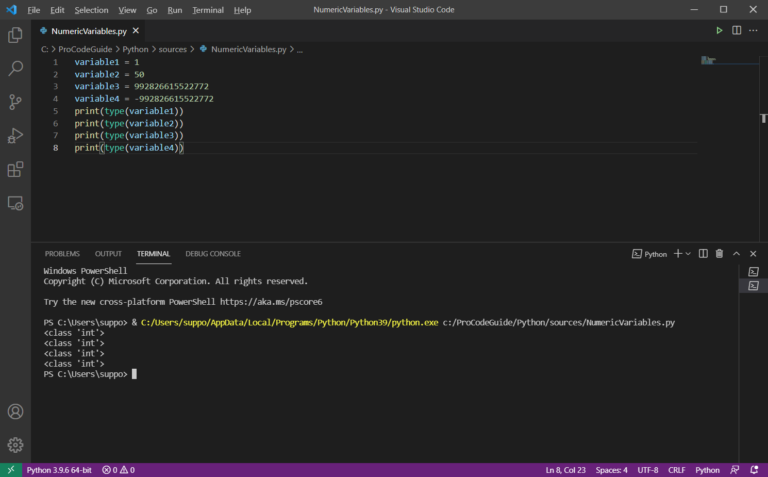
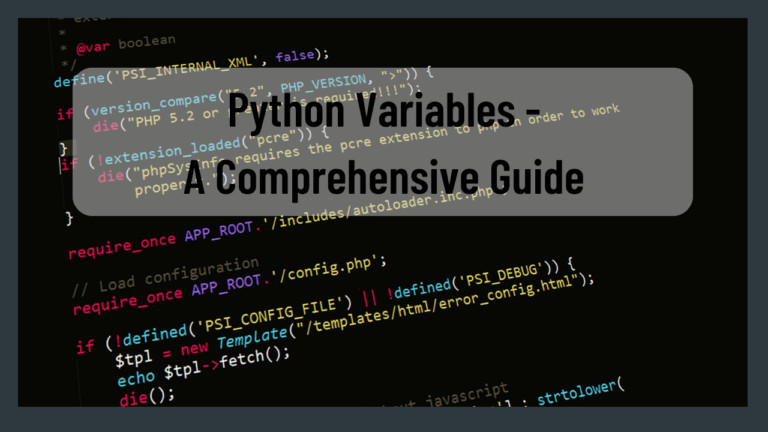
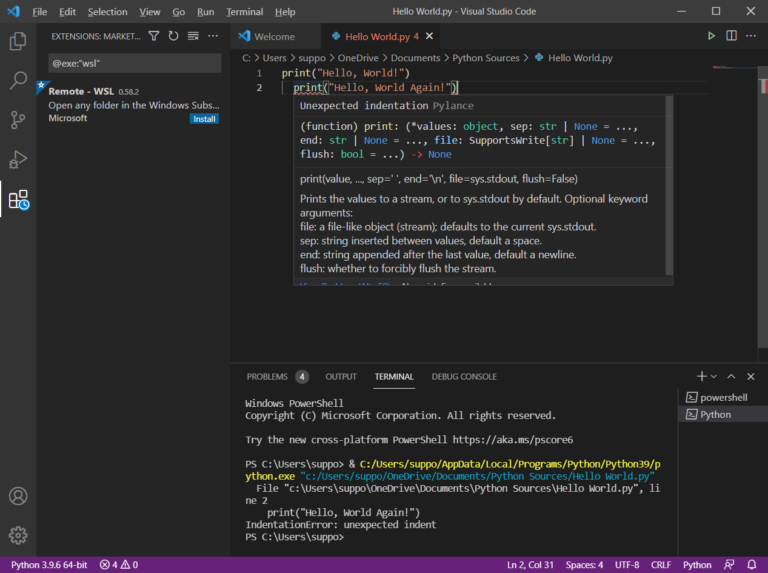
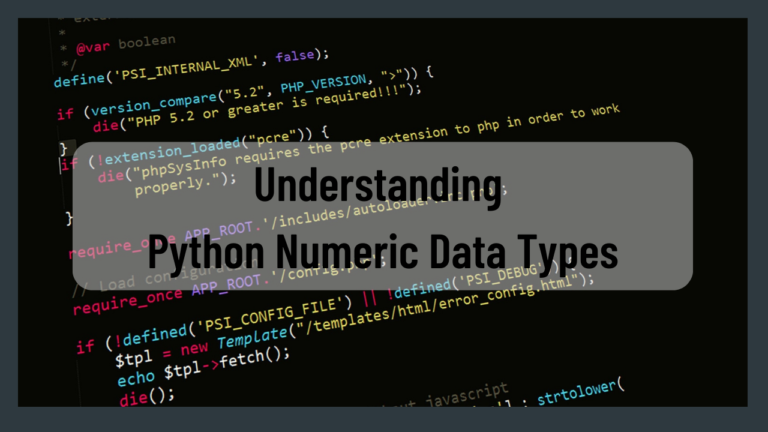
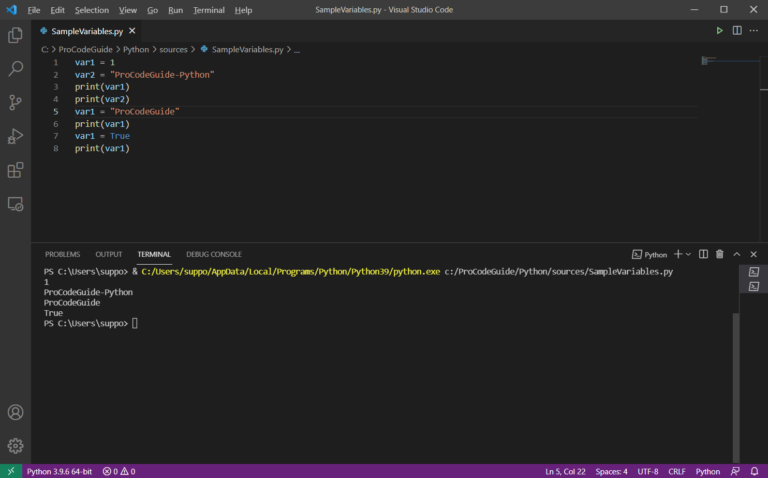
Thank you. Really awesome. Your explanation of python’s introduction is very clear. I am new to python but now I have got some idea about python after reading this blog
Thanks for your feedback!